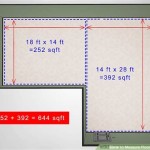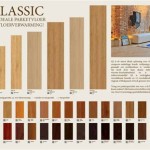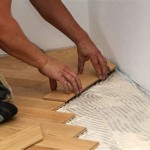Budget-Friendly Patio Flooring Ideas
Creating an inviting and functional outdoor space often begins with the flooring. A well-chosen patio floor can dramatically enhance the aesthetic appeal and usability of a backyard or garden. However, undertaking a patio flooring project does not necessitate excessive expenditure. Numerous affordable options are available that can provide both durability and visual charm without breaking the bank. This article explores several budget-conscious patio flooring ideas, considering factors like material cost, installation ease, and long-term maintenance.
Gravel: A Cost-Effective and Versatile Option
Gravel presents an economical and highly adaptable solution for patio flooring. Available in a variety of colors, sizes, and textures, gravel can be customized to complement diverse architectural styles and landscaping themes. Common gravel types include pea gravel, crushed stone, decomposed granite, and river rock. Pea gravel, known for its smooth, rounded texture, offers a comfortable walking surface, while crushed stone provides enhanced stability and drainage. Decomposed granite, a fine, granular material, creates a firm and natural-looking base. River rock, larger and more irregular, adds a rustic and organic element to the patio design.
The primary advantage of gravel lies in its affordability. Compared to materials like concrete, pavers, or decking, gravel is significantly less expensive per square foot. Installation is relatively simple and can be accomplished as a do-it-yourself project, further reducing costs. Typically, the installation process involves clearing the area, laying down a weed barrier fabric to prevent weed growth, and then spreading the gravel evenly to the desired thickness. Border edging, such as metal, plastic, or stone, can be installed to contain the gravel and maintain a neat appearance.
While gravel offers numerous benefits, it's crucial to acknowledge its limitations. Gravel surfaces can shift and migrate over time, requiring periodic raking and topping up. Weed control is essential to prevent unsightly growth. Accessibility for wheelchairs or individuals with mobility issues may be limited, particularly with larger or uneven gravel types. Proper drainage is crucial to prevent water accumulation and erosion. Despite these drawbacks, gravel remains a popular choice for budget-conscious homeowners seeking an attractive and practical patio flooring solution.
Concrete Pavers: Balancing Cost and Durability
Concrete pavers represent a middle ground between affordability and durability in patio flooring. These manufactured units are available in a wide range of shapes, sizes, colors, and textures, allowing for diverse design possibilities. Concrete pavers can mimic the appearance of natural stone, brick, or even wood, providing an aesthetically pleasing alternative at a lower cost. They are generally more expensive than gravel but less expensive than natural stone or premium decking materials.
Installation of concrete pavers typically involves preparing a compacted base of gravel and sand, similar to gravel installations. The pavers are then laid in the desired pattern, with joints filled with sand or polymeric sand to stabilize the surface and prevent weed growth. While professional installation is recommended for optimal results, experienced DIYers can successfully install concrete pavers, provided they have the necessary tools and knowledge.
Concrete pavers offer several advantages over gravel. They provide a more stable and even surface, improving accessibility and reducing the risk of tripping. They are generally more durable and resistant to wear and tear. The wide variety of styles allows for greater design flexibility and customization. However, concrete pavers can be susceptible to staining and fading over time, requiring periodic cleaning and sealing. The initial cost, while lower than natural stone, can still be significant for larger patio areas. Proper installation is crucial to prevent issues like settling, cracking, or weed growth. Despite these considerations, concrete pavers offer a good balance of affordability, durability, and aesthetic appeal, making them a popular choice for patio flooring.
Wood Decking Tiles: An Easy-to-Install and Stylish Option
Wood decking tiles offer a convenient and relatively affordable way to create a comfortable and visually appealing patio surface. These interlocking tiles are typically made from wood, composite materials, or recycled plastic. Wood decking tiles provide a warm and natural aesthetic, while composite and plastic tiles offer enhanced durability and resistance to weather damage. They are generally sold in square or rectangular shapes and can be easily installed without specialized tools or skills.
The primary advantage of wood decking tiles is their ease of installation. The interlocking design allows for quick and simple assembly, making it an ideal DIY project. The tiles can be laid directly over existing concrete or other hard surfaces, eliminating the need for extensive site preparation. They can also be easily removed or rearranged, providing flexibility in design and allowing for access to the underlying surface for maintenance or repairs.
While wood decking tiles offer numerous benefits, it's important to consider their limitations. Wood tiles require regular maintenance, including cleaning, staining, or sealing, to protect them from the elements and prevent rot or decay. Composite and plastic tiles are more durable but may not have the same natural aesthetic appeal as wood. The cost of decking tiles can vary depending on the material and quality, but they are generally more expensive than gravel or some types of concrete pavers. The substructure beneath the tiles should be relatively level and well-drained to prevent water accumulation and damage. Despite these considerations, wood decking tiles offer a stylish and practical solution for creating a comfortable and attractive patio surface on a budget.
Brick: A Classic and Durable Choice with Potential Savings
Brick, a timeless and durable material, can be a cost-effective choice for patio flooring, particularly if utilizing reclaimed or salvaged bricks. Reclaimed bricks, sourced from demolition sites or repurposed projects, offer a unique character and aesthetic appeal at a fraction of the cost of new bricks. The weathered and aged appearance of reclaimed bricks can add charm and authenticity to a patio design.
The installation process for brick patios is similar to that of concrete pavers, involving preparing a compacted base of gravel and sand. The bricks are then laid in the desired pattern, with joints filled with sand or mortar. While professional installation is recommended for larger or more complex projects, experienced DIYers can successfully install brick patios, particularly with simpler patterns. Mortar joints provide a more stable and durable surface but require more skill and precision to install properly.
Brick offers several advantages as a patio flooring material. It is highly durable and resistant to wear and tear, making it suitable for high-traffic areas. Brick is also relatively low-maintenance, requiring only occasional cleaning. The use of reclaimed bricks can significantly reduce the cost of the project while adding unique character to the patio design. However, brick can be susceptible to staining and fading over time. The initial cost of new brick can be significant, although reclamation offers a budget-friendly alternative. Proper drainage is crucial to prevent water accumulation and damage from freeze-thaw cycles. Despite these considerations, brick remains a popular and enduring choice for patio flooring, offering a combination of durability, aesthetic appeal, and potential cost savings.
Stepping Stones with Ground Cover: A Natural and Economical Approach
An often-overlooked yet highly economical patio flooring solution is the combination of stepping stones with ground cover. This approach involves strategically placing individual stones, such as flagstone, concrete pavers, or even large rocks, across a bed of ground cover plants or gravel. The stepping stones provide a defined pathway and walking surface, while the ground cover softens the edges and adds a natural, organic feel to the patio area.
The primary advantage of this approach is its affordability. Stepping stones are typically less expensive than covering the entire patio area with a solid flooring material. Ground cover plants, such as creeping thyme, clover, or sedum, can be relatively inexpensive and easy to propagate. Gravel can also be used as a ground cover, providing a low-maintenance and cost-effective alternative. Installation is relatively simple and can be accomplished as a DIY project.
This patio flooring solution offers several benefits beyond its affordability. It creates a natural and visually appealing outdoor space. The ground cover plants can help to filter rainwater and reduce runoff. The permeable surface allows for better drainage and reduces the risk of water accumulation. However, this approach may not be suitable for all patio areas or design styles. Accessibility for wheelchairs or individuals with mobility issues may be limited, particularly with uneven stepping stones or dense ground cover. Weed control is essential to prevent unwanted growth. The walking surface may be uneven or unstable in certain areas. Despite these limitations, the combination of stepping stones with ground cover offers a unique and budget-friendly way to create a natural and inviting patio space.
Mulch: A Temporary and Extremely Affordable Option
While not a conventional patio flooring material, mulch can serve as a temporary and exceptionally cost-effective solution, particularly for seasonal use or as a base for other patio features. Mulch, composed of shredded wood, bark, or other organic materials, provides a soft and comfortable walking surface and can significantly enhance the aesthetic appeal of a garden or outdoor space.
The primary advantage of mulch is its affordability. It is one of the least expensive flooring materials available, making it an ideal option for homeowners on a tight budget. Installation is incredibly simple, requiring only the spreading of the mulch over the desired area. Mulch also provides excellent weed suppression and helps to retain moisture in the soil, benefiting surrounding plants.
However, it's crucial to acknowledge the limitations of mulch as a patio flooring material. It is not a durable or long-lasting solution and will decompose over time, requiring periodic replenishment. Mulch can also be tracked indoors and may attract insects or pests. It is not suitable for heavy foot traffic or areas where furniture will be placed. Accessibility for wheelchairs or individuals with mobility issues is limited. Despite these drawbacks, mulch can serve as a valuable and affordable temporary flooring solution, particularly for creating pathways or providing a soft surface around garden beds or play areas. Consider using larger wood chips to increase longevity and reduce tracking.

11 Fantastic Patio Flooring Ideas To Transform Your Home

Top 7 Est Patio Flooring To Choose From

6 Outdoor Flooring Options Patio On A Budget Checkatrade

9 Diy Cool Creative Patio Flooring Ideas Backyard

Outdoor Flooring Ideas That Will Rejuvenate Your Backyard Space

Jazz Up Your Front House With These Stunning Outdoor Flooring Ideas
What Is The Est Patio Flooring Option

Patio Floor Ideas For 22 Diffe Types Of Patios

14 Outdoor Flooring Options Ultimate Guide

Top 7 Est Patio Flooring To Choose From
Related Posts








